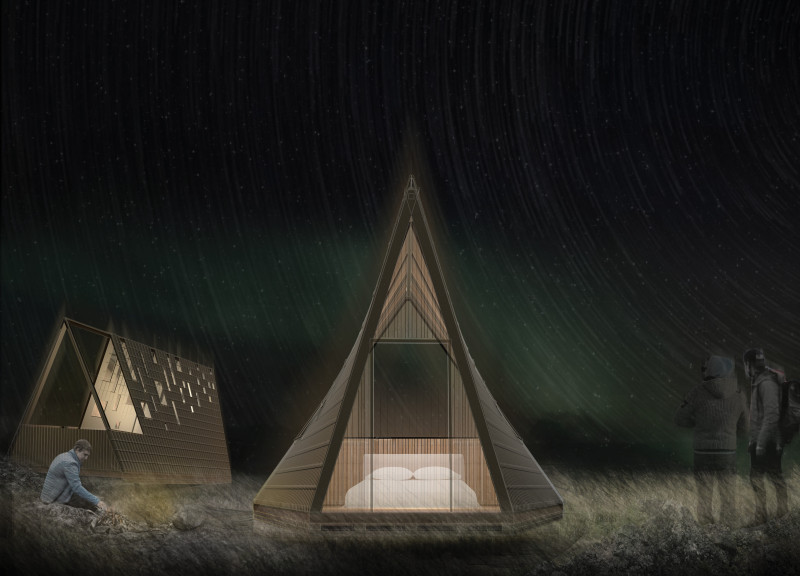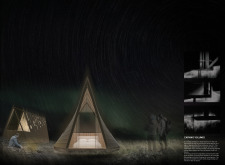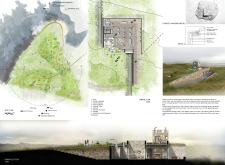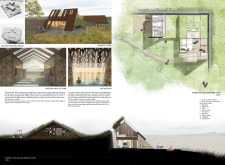5 key facts about this project
The design demonstrates a careful prioritization of sustainability, showcasing a palette of materials that align with this vision. The use of locally sourced materials not only minimizes the environmental footprint but also roots the structure within its geographical context. Key materials utilized in the project include concrete, glass, sustainable timber, and stone, each chosen deliberately for their properties and aesthetic contributions. Concrete offers both durability and a modernist aesthetic, while large expanses of glass facilitate natural light, enhancing the ambiance and reducing reliance on artificial lighting. Sustainable timber introduces warmth and texture, contrasting beautifully with the hardness of the concrete, and the stone accents serve to ground the structure within its natural surroundings.
Critically, the architecture takes a unique approach to space planning, with fluid circulation paths that encourage exploration and discovery. The open floor plan is designed to be flexible, allowing for a variety of configurations depending on user needs. This adaptability is particularly significant in the context of community spaces, where the ability to respond to different events or activities can enhance the user experience. Moreover, the integration of outdoor terraces and green spaces promotes environmental responsibility and provides areas for relaxation and social gatherings.
Visually, the project's aesthetics communicate a modern language while remaining sensitive to traditional forms. This dialogue between past and present is evident in features such as overhanging roofs that provide shade and shelter, as well as large windows that frame picturesque views of the landscape. The architectural design embraces a minimalist ethos, reducing visual clutter and emphasizing clean lines, which helps the structure to blend into its environment rather than dominate it.
The relationship between the building and its site is meticulously crafted, with landscaping elements that complement the architectural form. Thoughtful placement of trees and native plant species not only enhances the ecological viability of the space but also enriches the sensory experience for visitors. The landscape design is purposeful, creating a harmonious balance that invites users to appreciate the surrounding nature while also enjoying the benefits of the built environment.
The project ultimately represents a holistic vision of architecture that transcends simple functionality, advocating for a lifestyle that embraces connection—both among community members and between nature and architecture. By prioritizing sustainability, adaptability, and aesthetic integrity, the design exemplifies a modern architectural response to contemporary needs and challenges.
As you delve deeper into the project's presentation, consider examining the architectural plans, architectural sections, and various architectural designs utilized throughout. These elements can provide additional insights into the thought processes and innovative ideas that underpin the project. The exploration of such details will enrich your understanding of this architectural endeavor and its relevance within the current discourse on design and community engagement.


























